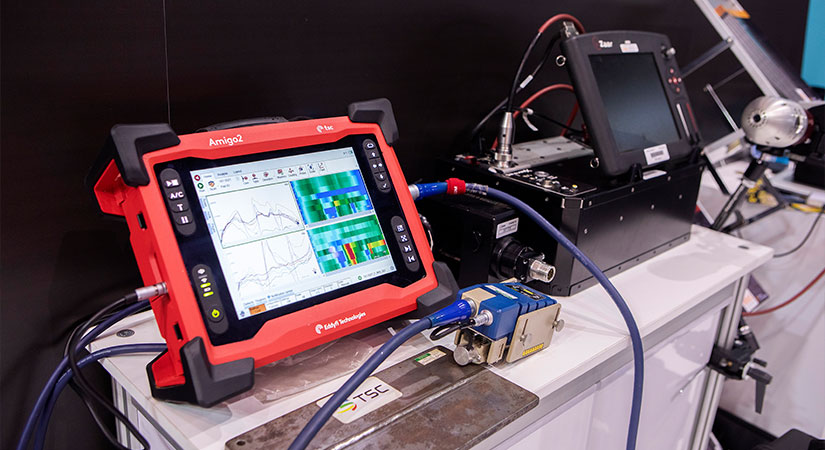Everything You Need To Know About NDT
Non-destructive testing (NDT) is a multidisciplinary branch of engineering that plays a critical role in everyday life.
What is NDT?
Non-destructive testing (NDT) is a multidisciplinary branch of engineering that plays a critical role in everyday life by detecting and evaluating flaws in structural components and systems. NDT uses an extensive range of testing methods which are designed to ensure that materials and structures perform their function safely, reliably and cost-effectively. It is a vital quality assurance tool which can be applied to any stage of an item’s construction without affecting the serviceability of the part or system.
Typical examples where NDT technicians and engineers conduct tests to locate and identify flaws and discontinuities include aircraft, motorcars, reactors, trains, pipelines, bridges, power stations, oil platforms and buildings where material or structural failure could be catastrophic. There are however, many less visible, but no less important areas where NDT plays a crucial role.
NDT is typically used for:
- accident prevention
- condition monitoring
- in-service inspections
- improving product reliability
- ensuring product integrity
- providing repair criteria
- reducing operating or production costs
- determining conformity to stated requirements
The essential feature of NDT methods is that they don’t result in any adverse effects on the material or structure that’s being tested. Inspection, measurement and evaluation can all be successfully completed without any impact on the item’s future usefulness or performance.
What is NDE?
Non-destructive testing is often referred to as non-destructive evaluation (NDE), but technically speaking, they cover slightly different areas. NDE methods are generally used for more quantitative measurements, for example locating a defect as well as providing measurement information about the defect such as size, shape and orientation. NDE methods are also used to determine the physical properties of a material, for example formability and fracture toughness.
NDT/NDE technologies
NDT and NDE apply predominantly to industrial inspections but the techniques used are similar to those used in the medical industry such as X-rays and ultrasound. The methods range from simple techniques to far more advanced technologies, with innovations and advancements continually being introduced. The most commonly used methods are described below.
Visual and Optical Testing (VT)
This is the most basic NDT method which ranges from simple visual examination with the naked eye to computer-controlled remote camera systems. These devices are capable of automatically recognising and measuring features of a component.
Radiographic Testing (RT)
Industrial radiography involves using radiation to penetrate a test object to identify defects or to inspect internal features. X-Rays are commonly used for thinner or less dense materials while gamma rays are used for thicker or denser materials. Radiation passes through the object being inspected onto a recording medium such as film, and the resulting shadowgraph identifies features such as thickness and density changes.
Magnetic Particle Testing (MT)
This method is used to locate surface and near-surface flaws or defects in ferromagnetic materials. After the magnetic field has been induced, the surface is dusted with iron particles (either dry or suspended in a liquid solution) which may also be coloured or fluorescent. If there is a discontinuity, it will disrupt the flow of the magnetic field and force some of the field to leak out at the surface enabling inspectors to visibly identify the flaw.
Ultrasonic Testing (UT)
This method involves the transmission of ultra high-frequency sound waves onto a material which are then returned to a receiver (which can be presented on a visual display). If there are defects or changes in the material properties, these reflections will record a different acoustic density and velocity. The most common UT technique is pulse echo.
Penetrant Testing
Penetrant testing involves coating a clean test object with a solution containing a visible or fluorescent dye. This dye penetrates into fissures or voids that are open to the surface. Excess penetrant is then removed and drawn out of the defects using a developer. When fluorescent dye is used, the imperfections can be seen with ultraviolet light and when visible dyes are used, they can be identified by the vivid colour contrast between the penetrant and the developer.
Electromagnetic Testing (ET)
This category includes eddy current testing, alternating current field measurement and remote field testing – all of which involve inducing an electric current or magnetic field into the conductive component and evaluating the results. Any material defects will cause an interruption to the flow of the currents. The electrical conductivity and magnetic permeability of materials also affects eddy currents so this method of testing can be used to sort materials based on those properties.
Leak Testing (LT)
Leak testing detects and locates leaks using several different methods including electronic listening devices, pressure gauge measurements, liquid and gas penetrant techniques and simple soap bubble tests. Examples of situations where leak testing is used are pressure containment parts, pressure vessels and structures.
Acoustic Emission Testing (AE)
This method involves applying a localised external force to the part under test. When the solid material is stressed, imperfections emit short-lived high frequency bursts of acoustic energy or ‘emissions’. These are detected by special receivers and evaluated in terms of the time they take to arrive and their intensity, with the results then used to locate discontinuities.
Find out more about non-destructive testing methods and technology, or contact us today for a no-obligation chat.
